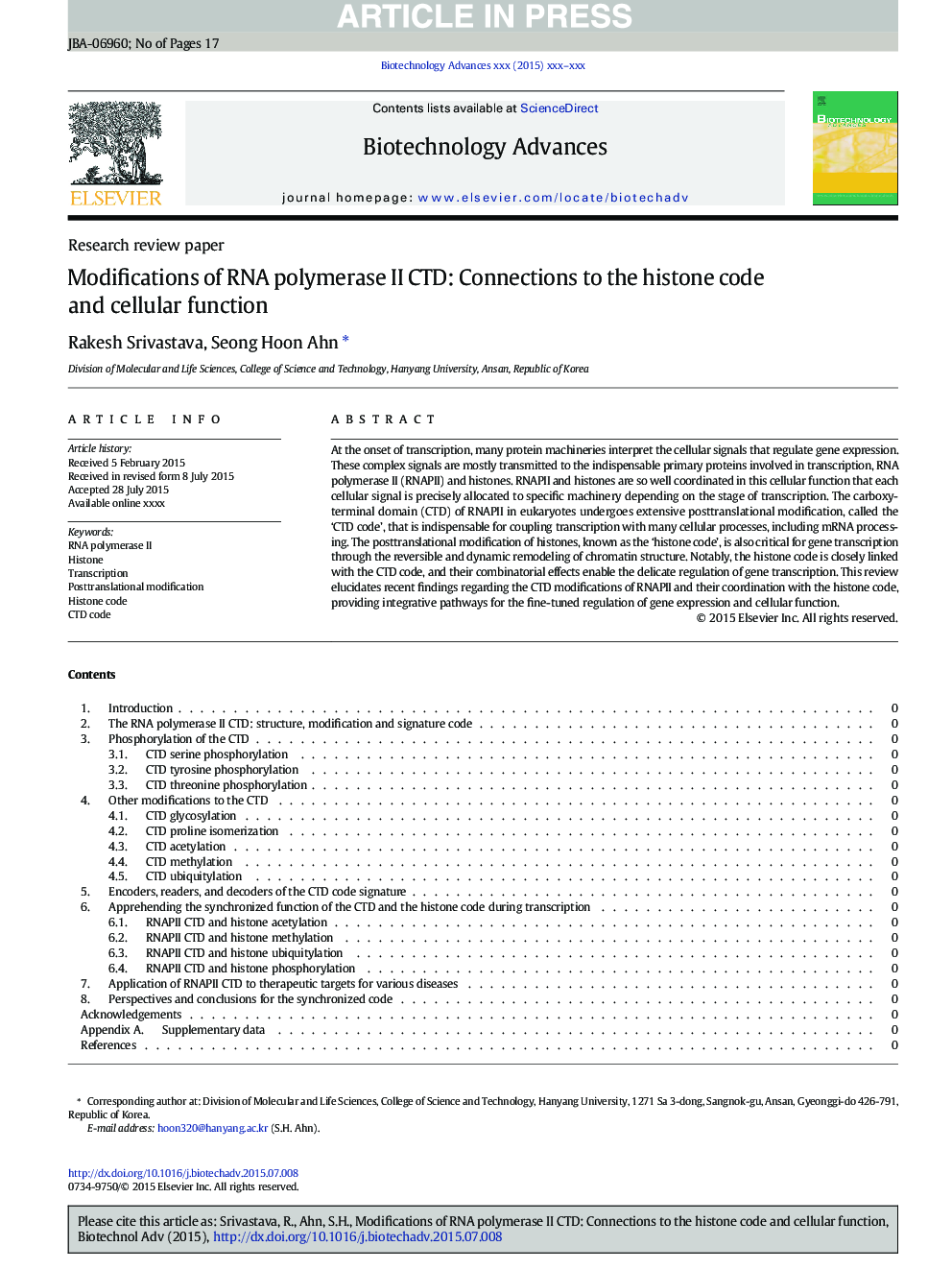| Article ID | Journal | Published Year | Pages | File Type |
|---|---|---|---|---|
| 10231467 | Biotechnology Advances | 2015 | 17 Pages |
Abstract
At the onset of transcription, many protein machineries interpret the cellular signals that regulate gene expression. These complex signals are mostly transmitted to the indispensable primary proteins involved in transcription, RNA polymerase II (RNAPII) and histones. RNAPII and histones are so well coordinated in this cellular function that each cellular signal is precisely allocated to specific machinery depending on the stage of transcription. The carboxy-terminal domain (CTD) of RNAPII in eukaryotes undergoes extensive posttranslational modification, called the 'CTD code', that is indispensable for coupling transcription with many cellular processes, including mRNA processing. The posttranslational modification of histones, known as the 'histone code', is also critical for gene transcription through the reversible and dynamic remodeling of chromatin structure. Notably, the histone code is closely linked with the CTD code, and their combinatorial effects enable the delicate regulation of gene transcription. This review elucidates recent findings regarding the CTD modifications of RNAPII and their coordination with the histone code, providing integrative pathways for the fine-tuned regulation of gene expression and cellular function.
Related Topics
Physical Sciences and Engineering
Chemical Engineering
Bioengineering
Authors
Rakesh Srivastava, Seong Hoon Ahn,
